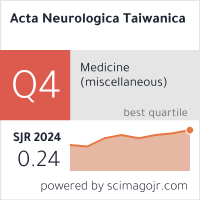 “Cannabis plant has the scientific name called Cannabis sativa L. Cannabis plant has many species, but there are three main species including Cannabis sativa, Cannabis indica and Cannabis ruderalis. Over 70 compounds isolated from cannabis species are called cannabinoids (CBN).
“Cannabis plant has the scientific name called Cannabis sativa L. Cannabis plant has many species, but there are three main species including Cannabis sativa, Cannabis indica and Cannabis ruderalis. Over 70 compounds isolated from cannabis species are called cannabinoids (CBN).
Cannabinoids produce over 100 naturally occurring chemicals. The most abundant chemicals are delta-9-tetrahydrocannabinol (THC) and Cannabidiol (CBD). THC is psychotropic chemical that makes people feel “high” while CBD is nonpsychotropic chemical. However, cannabinoid chemicals are not found only in the cannabis plant, they are also produced by the mammalian body, called endocannabinoids and in the laboratory, called synthesized cannabinoids.
Endocannabinoids are endogenous lipid-based retrograde neurotransmitters that bind to cannabinoid receptors, and cannabinoid receptor proteins that are expressed throughout the mammalian central nervous system including brain and peripheral nervous system. There are at least two types of endocannabinoid receptors (CB1 and CB2) which are G-protein coupled receptors.
CB1 receptors are particularly abundant in the frontal cortex, hippocampus, basal ganglia, hypothalamus and cerebellum, spinal cord and peripheral nervous system. They are present in inhibitory GABA-ergic neurons and excitatory glutamatergic neurons. CB2 receptor is most abundantly found on cells of the immune system, hematopoietic cells and glia cells. CB2 is mainly expressed in the periphery under normal healthy condition, but in conditions of disease or injury, this upregulation occurs within the brain, and CB2 is therefore expressed in the brain in unhealthy states.
Cannabis and cannabinoid are studied in different medical conditions. The therapeutic potentials of both cannabis and cannabinoid are related to the effects of THC, CBD and other cannabinoid compounds. However, the “high” effect of THC in cannabis and cannabinoid may limit the clinical use, particularly, the study on the therapeutic potential of THC alone is more limited.
This review emphasizes the therapeutic potential of CBD and CBD with THC. CBD has shown to have benefit in a variety of neuropsychiatric disorders including autism spectrum disorder, anxiety, psychosis, neuropathic pain, cancer pain, HIV, migraine, multiple sclerosis, Alzheimer disease, Parkinson disease, Huntington disease, hypoxic-ischemic injury and epilepsy. CBD is generally well tolerated. Most common adverse events are diarrhea and somnolence. CBD also shows significantly low abuse potential.”
https://www.ncbi.nlm.nih.gov/pubmed/31867704
 “Cannabis was used for cancer patients as early as about 2500 years ago.
“Cannabis was used for cancer patients as early as about 2500 years ago.
 “This study evaluated the potential of combined cannabis constituents to reduce nausea.
“This study evaluated the potential of combined cannabis constituents to reduce nausea. “(-)-Trans-Δ9-tetrahydrocannabinol (Δ9-THC) is the main compound responsible for the intoxicant activity of Cannabis sativa L. The length of the side alkyl chain influences the biological activity of this cannabinoid. In particular, synthetic analogues of Δ9-THC with a longer side chain have shown cannabimimetic properties far higher than Δ9-THC itself. In the attempt to define the phytocannabinoids profile that characterizes a medicinal cannabis variety, a new phytocannabinoid with the same structure of Δ9-THC but with a seven-term alkyl side chain was identified. The natural compound was isolated and fully characterized and its stereochemical configuration was assigned by match with the same compound obtained by a stereoselective synthesis. This new phytocannabinoid has been called (-)-trans-Δ9-tetrahydrocannabiphorol (Δ9-THCP). Along with Δ9-THCP, the corresponding
“(-)-Trans-Δ9-tetrahydrocannabinol (Δ9-THC) is the main compound responsible for the intoxicant activity of Cannabis sativa L. The length of the side alkyl chain influences the biological activity of this cannabinoid. In particular, synthetic analogues of Δ9-THC with a longer side chain have shown cannabimimetic properties far higher than Δ9-THC itself. In the attempt to define the phytocannabinoids profile that characterizes a medicinal cannabis variety, a new phytocannabinoid with the same structure of Δ9-THC but with a seven-term alkyl side chain was identified. The natural compound was isolated and fully characterized and its stereochemical configuration was assigned by match with the same compound obtained by a stereoselective synthesis. This new phytocannabinoid has been called (-)-trans-Δ9-tetrahydrocannabiphorol (Δ9-THCP). Along with Δ9-THCP, the corresponding 
 “To summarize the history and evolution of cannabis use and policies and to review current therapeutic uses, safety, and the central role pharmacists can play.
“To summarize the history and evolution of cannabis use and policies and to review current therapeutic uses, safety, and the central role pharmacists can play. “To provide an up-to-date summary of the benefits and harms of
“To provide an up-to-date summary of the benefits and harms of  “Dystonia is a movement disorder characterized by sustained or intermittent muscle contractions causing abnormal movements and postures. Besides motor manifestations, patients with dystonia also display non-motor signs and symptoms including psychiatric and sensory disturbances.
“Dystonia is a movement disorder characterized by sustained or intermittent muscle contractions causing abnormal movements and postures. Besides motor manifestations, patients with dystonia also display non-motor signs and symptoms including psychiatric and sensory disturbances. “Glioma-related epilepsy significantly impact on patients’ quality of life, and can often be difficult to treat. Seizures cause significant morbidity for example neurocognitive deterioration, which may result from seizures themselves or due to adverse effects from antiepileptic drugs. Management of tumour with surgery, radiotherapy and chemotherapy may contribute to seizure control, but tumour related epilepsy is often refractory despite adequate treatment with standard anti-epileptic medications. Given the increasing interest in medicinal cannabis (or
“Glioma-related epilepsy significantly impact on patients’ quality of life, and can often be difficult to treat. Seizures cause significant morbidity for example neurocognitive deterioration, which may result from seizures themselves or due to adverse effects from antiepileptic drugs. Management of tumour with surgery, radiotherapy and chemotherapy may contribute to seizure control, but tumour related epilepsy is often refractory despite adequate treatment with standard anti-epileptic medications. Given the increasing interest in medicinal cannabis (or